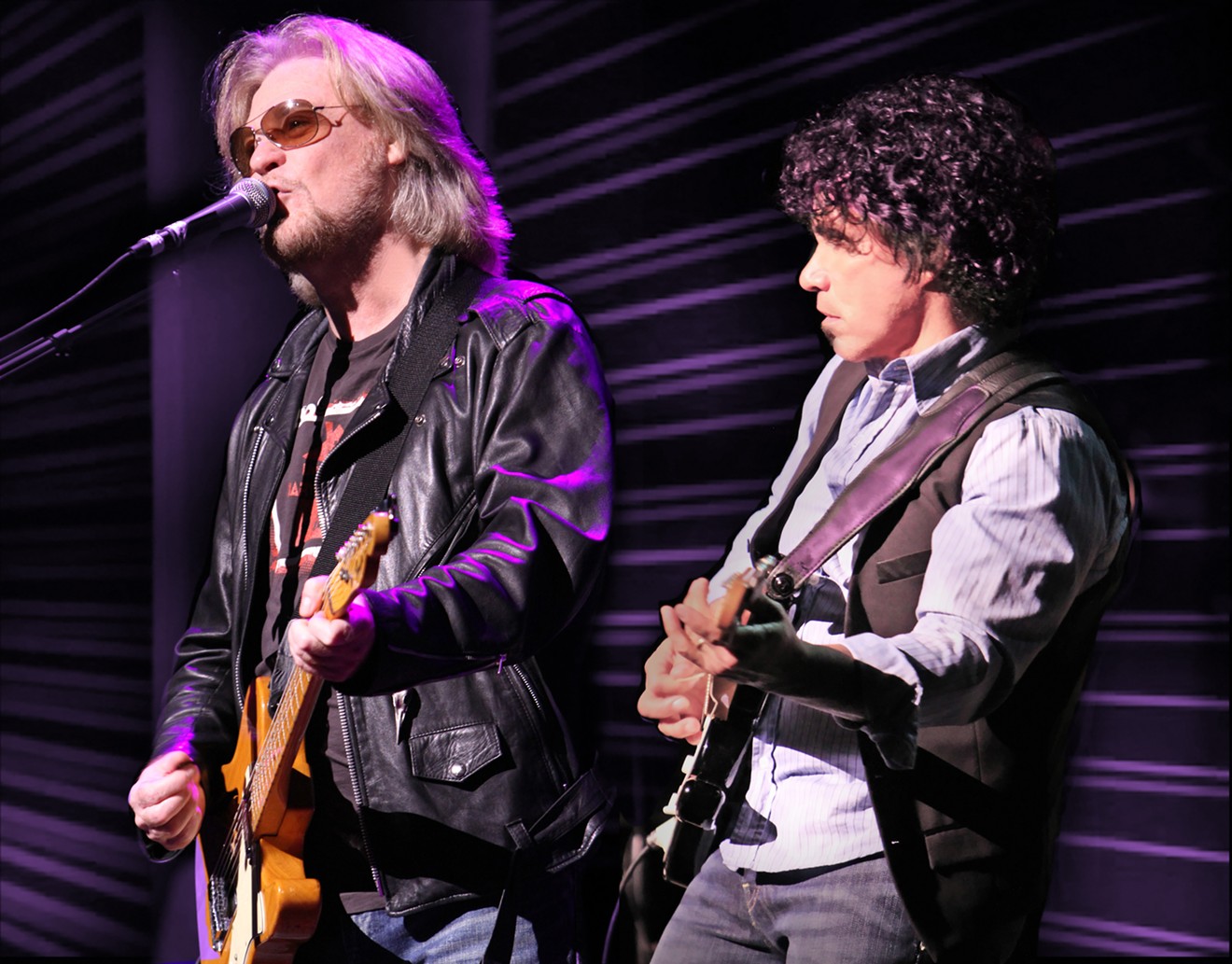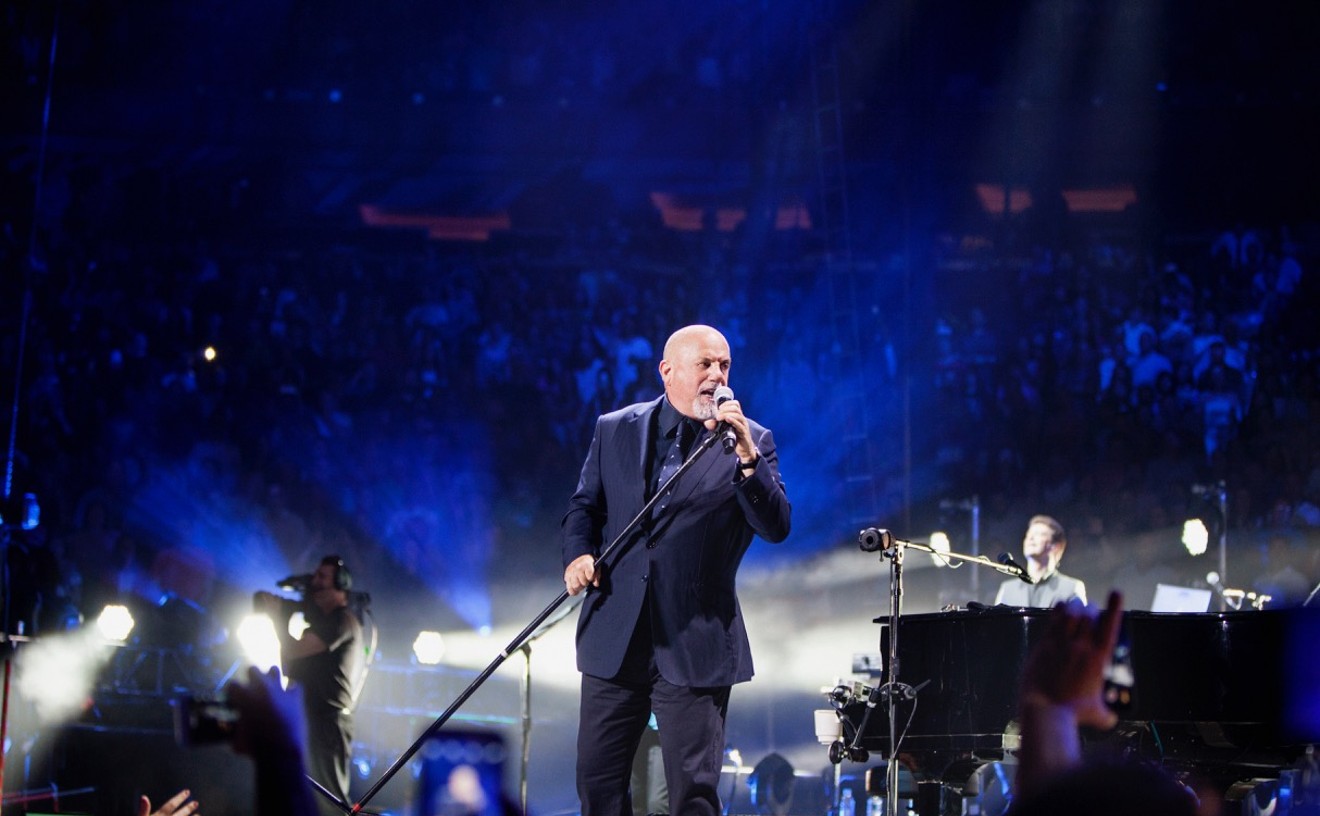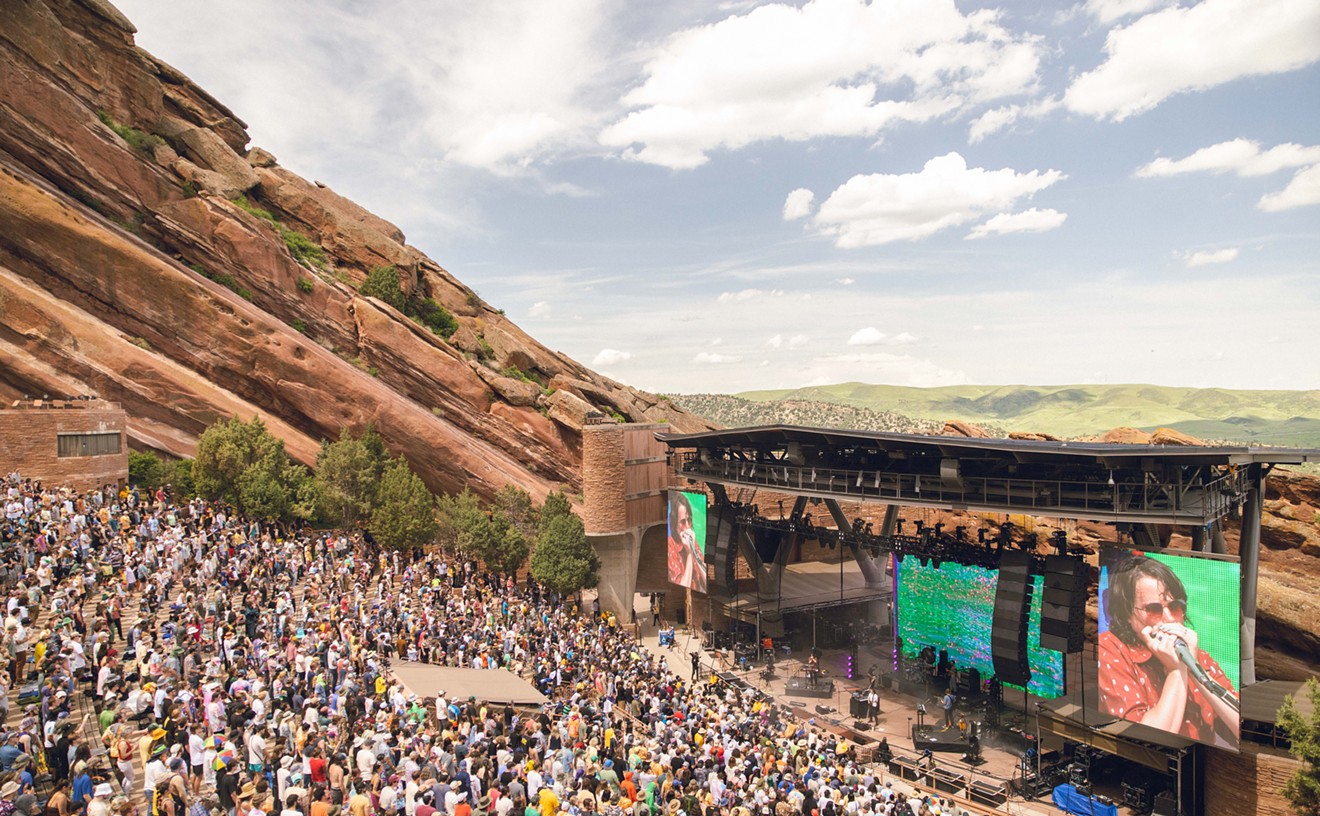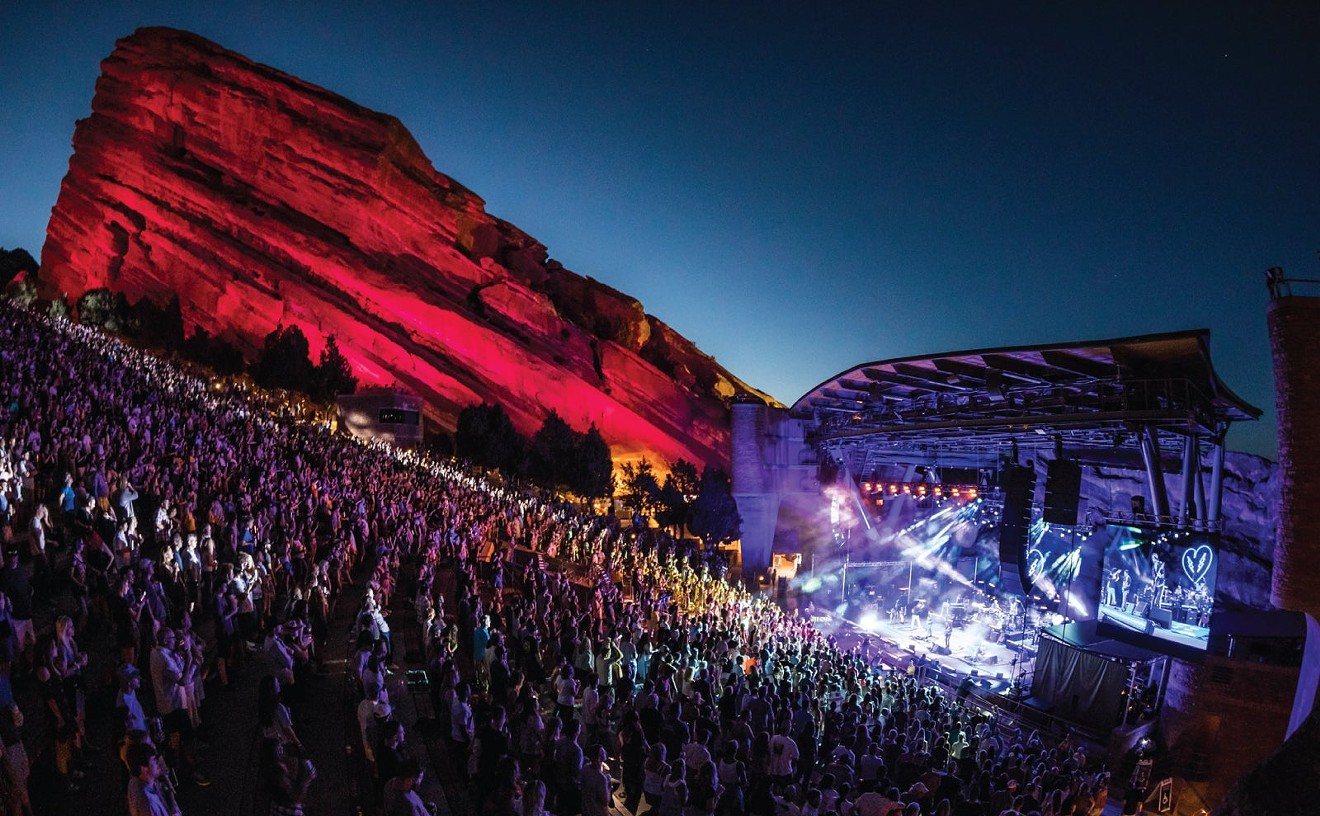Hall & Oates practically oozed pop hits that indelibly marked the musical landscape of the 1980s with a lasting impact still felt in current pop culture. For children of the Reagan era, cross-country road trips or short drives to the mall involved the music of Hall & Oates riding the radio airwaves. There was the throbbing bass groove of “Maneater,” the earnestness of “Kiss on My List,” the spacey, atmospheric feel of “I Can’t Go for That (No Can Do),” the declarative hugeness of “Out of Touch,” and a host of other heavily-played singles. MTV also joined in, unleashing a slew of music videos further driving home the act’s prominence. It was hard to dismiss the pair, as the songs were so ear-candy catchy and well-constructed.
Unfortunately, the bulk of Daryl Hall and John Oates’s recorded work was (and still is) largely eclipsed by their string of '80s hits. They started cranking out albums together in 1972, and released their last studio disc Home for Christmas in 2006. That’s a sizable cache of material that most retro radio fans have largely missed. Going back and listening to the largely forgotten output is an interesting, eye-opening journey. There are a number of seemingly forgotten, radio-worthy tracks that should have received much more attention.
These days, Hall and Oates seem content with where they are as a duo, relegating themselves to performing live while pursuing other interests individually. Many of their album covers and music videos are snicker-worthy, but the tunes remain timeless as proven by a sizable fan base, continuous radio airplay and nights at the karaoke bar after a beer or three. We spoke with the friendly John Oates about the pair's history, along with his own creative endeavors, in advance of Hall & Oates’ July 15 Denver-area date with co-headliners Tears for Fears.
Westword: What makes your partnership with Daryl [Hall] work?
John Oates: Well, it’s a very complicated answer to that question. We grew up in the same parts of Pennsylvania in different but similar small towns, same type of families, went to the same type of schools, listened to the same type of radio. So, as we grew up, we had this built-in, common musical foundation; we have a lot in common there. I think we are both very driven individuals creatively. I think the other thing is that we are very different as people, so it’s enabled us to live separate lives and not get in each other’s way on the personal side. So, I don’t know; it has a lot to do with a lot of things.
Your first album Whole Oats came out in '72. Do you feel like the '80s hits overshadowed your catalog?
Absolutely. There’s no doubt about it. Us having recorded and written those big songs and happening simultaneous with the rise of MTV caused those songs to overshadow pretty much everything. That’s one of the reasons when we play live in our concerts, we very often include deeper cuts from the '70s that perhaps our newer or more casual fans might not be so aware of.
You have a very muscular singing voice. Do you wish you had done more of the lead vocal work on the albums you recorded with Daryl? I believe you sang lead, typically, on two to three songs per record for the majority of the records.
Well, what happened — first of all, Daryl’s more prolific than me. He tended to write more songs than I did; he’s always been like that, so that was a natural thing. The other thing was his voice connected on radio in ways that my voice didn’t, and that’s just the nature of the beast. It is what it is. Sure, I could have said, “Well if I’m not singing, I don’t want to be part of this deal.” I could have done that, but that would have been ego-driven, and to be honest with you, I don’t need that in my life. I was more focused on making what we did together successful, and if it meant that Daryl’s voice would make a song a hit, I was much more interested in that. That’s just how I am as a person. Now that I’m doing my own stuff, believe me, I get to sing as much as I want [laughs]. I’m actually glad, because over the years I’ve saved my voice in a way. It’s almost like I have a new personality.
There have been mandolins or mandolin-like instruments such as the Mando-guitar and mandola on many of your albums with Daryl. What was the attraction to that sound?
When I first met Daryl, I was doing a lot of traditional roots music – Delta blues, Appalachian, bluegrass, that kind of stuff – and Daryl wasn’t involved in that at all. He didn’t know much about that kind of music. He was classically-trained, but he was also into church music, doo-wop and R&B and that kind of stuff. When we got together, I would play a lot of that stuff, and he really couldn’t play with me because he was predominantly a piano player, but he’s such a good musician and he wanted to stretch out, so he picked up a mandolin and taught himself how to play mandolin pretty quickly. Then from the mandolin, he wanted to play more aggressively, so he actually took a tenor guitar and kind of strung it like a mandolin and started playing that. That became the tonality that he used to write songs with, because it gave him a different way of expressing himself and from there he progressed to playing normal guitar. It’s just a matter of him wanting to try different things.
There was a shift in sound between H20 in '82 and Big Bam Boom in '84. Keyboards were pushed more to the forefront, at least in the mix. With that increase in keyboards, was it more difficult for you to fashion guitar parts?
The reason the keyboards seemed to come to the front in the '80s was because there was all this new digital technology becoming available, and we were trying to take advantage of it. Being at the top of our game and hit records and being successful, a lot of these new companies who were developing these new digital keyboards were throwing stuff at us and saying, “Here. Use our stuff. We’ve got this new thing.” When you’re a creative person, you want to try all these new sounds. So that’s what was happening, but if you listen to those records, they’re very rhythm-section oriented. There’s drums, there’s real bass, there’s real guitars being played and real singing happening, and at the same time, we were experimenting with the new technology. I think it was a unique period of time, especially on Big Bam Boom where we were at the crossroads of the last days of analog recording and the new dawn of digital recording, and we were just starting to combine those two elements.
Back in those days, how long did it take to prep your hair for photoshoots and videos? The cover of Ooh Yeah! is spectacular. Those were some big hair days.
Everything was big in the '80s. It was an oversized decade, in general. Everything was done to excess, and I guess that was part of it. "Hey look, I’ve got good hair, and I’m lucky" [chuckles].
You spend a lot of time on your ranch in Colorado. What is that experience like for you?
Colorado saved my life in a way. Back after the '80s was over, a lot of things happened simultaneously. I just wrote a book about it, and there’s a lot of detail in the book about this. I got divorced; I had some financial issues; our manager left for greener pastures, so to speak; and I was kind of adrift both personally and professionally. I decided to basically sell everything I owned back East and move to Colorado. When I did that, I basically reinvented myself and subsequently got remarried, had a kid, built a house and really spent almost 20 years hiking, skiing, living in the mountains and making new friends. It was a very important period of my life, because it enabled me to go forward. Now, I’ve kind of migrated over to Nashville. We still have our place in Colorado, but Nashville’s now become home, and I’m much more involved in my solo music career.
Change of Seasons: A Memoir came out this year. Was it cathartic to get your story on paper?
Absolutely. It was almost like going through regressive therapy. Once the memories began flooding back and input from other people [was provided], [they] were all catalysts for me to start to recover some of these things from my past. It was really interesting; it was an interesting process to do. Being a songwriter for all these years and being a little bit more used to creative instant gratification— where you write a song and it’s kind of immediate and you play it and you can feel whether it’s happening — the book process took almost two years, and you don’t know what you are really going to achieve at the end, what the final result is going to be until you finish it. Then of course, you don’t know what that’s going to be like until people read it, and they give you a response. So, it was really being creative in a void of sorts, and I wasn’t used to that. It was a whole new experience for me.
Looking back on the book and having reviewed it once it was released, were there things you wished you had included?
Yes and no. It’s been a long life, so it was a lot to cover. When I got to 400 pages, and I realized I hadn’t even touched on my solo albums and my move to Nashville and this new musical rebirth that I’ve had with the Nashville music community, I realized that I was going to have to do a second volume if I was going to cover that, because I didn’t want to shortchange that experience. So, the book I think is: This is the beginning; it’s the early days, the story of how Hall & Oates happened from my point of view, and I left it at that. It was such a new experience for me, and I realized I had so many stories to tell both personally and then collectively with my partnership with Daryl that it was just a lot of ground to cover.
Good Road to Follow came out a few years ago, and it was quite a feat. Do you have any plans for a new solo record?
Yeah, I do as a matter of fact; speak of the devil. As soon as we’re done talking, I am on my way to the recording studio (laughs). I am almost done — a project called Hurt. It started out as a tribute to Mississippi John Hurt, with a lot of Delta blues and a traditional approach to my heroes of the past of the music that kind of made me want to be a musician as a kid. In the process of recording, I assembled this incredible band of the most unbelievable players, and the music began to morph into this progressive Americana record. I started to tap into influences from the 1920s and the 1930s and swing music and all this kind of music that I thought was the predecessors or the precursors of rock and roll that was to come. It’s a really unique record. I’m proud of it, and it’s going to come out in 2018.
As a songwriter, have you ever sat down to write a song, come close to finishing, and then realized it’s something you’ve already written in whole or part?
[Laughs] That’s funny. Every musician, every songwriter uses certain conventions and certain familiar phraseology and techniques that they know work, and they’ve learned that some of those devices will work somehow in one way or another. You do find yourself going back to some of those things as a crutch, but what you try to do is push forward and not allow that to happen so you don’t end up repeating yourself and becoming a parody of yourself. That’s very hard to do, especially when you’ve been doing it a long time. That’s why I take on these projects that are unique and different. Good Road to Follow was collaborative. I went out of my way to reach out to people that I either knew or wanted to know and tried to get into their world and see how they made their records and allowed them to do what they do and went along for the ride on that. [On] this new record, I’m exploring music that I’ve never played before, so it forces me out of my comfort zone.
Along the line of new albums, Home for Christmas was the last studio album you made with Daryl, and that was eleven years ago. Do you have any plans to do a new studio record with him?
Not really, no. We created a body of work that we’re very proud of and that we almost can’t even tap into in its entirety, it’s so comprehensive. I think we’ve gone in different directions creatively. He’s very passionate about his television show Live from Daryl’s House, and he should be because he put a lot of energy and effort into making that happen. I’ve got an entirely separate musical life in Nashville. That keeps us moving forward creatively, but then we get together, and we’re very proud of what we’ve created together, and we go out and play that frequently. It’s almost like having the best of two worlds. We’ve got these two different lives that we’re both very proud of, but at the same time we’ve got the freedom to do other things.
Daryl Hall & John Oates withTears for Fears and Allen Stone, 7 p.m., Saturday, July 15, Fiddler’s Green Amphitheatre, 6350 Greenwood Plaza Boulevard, $35-$149.50, 303-220-7000.
Hall & Oates Keep Coming Back Together, Even as They Drift Apart
Hall & Oates practically oozed pop hits that indelibly marked the musical landscape of the 1980s with a lasting impact still felt in current pop culture.
July 13, 2017

Daryl Hall & John Oates
Mick Rock
[
{
"name": "Air - MediumRectangle - Inline Content - Mobile Display Size",
"component": "12017618",
"insertPoint": "2",
"requiredCountToDisplay": "2"
},{
"name": "Editor Picks",
"component": "17242653",
"insertPoint": "4",
"requiredCountToDisplay": "1"
},{
"name": "Inline Links",
"component": "18838239",
"insertPoint": "8th",
"startingPoint": 8,
"requiredCountToDisplay": "7",
"maxInsertions": 25
},{
"name": "Air - MediumRectangle - Combo - Inline Content",
"component": "17261320",
"insertPoint": "8th",
"startingPoint": 8,
"requiredCountToDisplay": "7",
"maxInsertions": 25
},{
"name": "Inline Links",
"component": "18838239",
"insertPoint": "8th",
"startingPoint": 12,
"requiredCountToDisplay": "11",
"maxInsertions": 25
},{
"name": "Air - Leaderboard Tower - Combo - Inline Content",
"component": "17261321",
"insertPoint": "8th",
"startingPoint": 12,
"requiredCountToDisplay": "11",
"maxInsertions": 25
}
]

KEEP WESTWORD FREE...
Since we started Westword, it has been defined as the free, independent voice of Denver, and we'd like to keep it that way. Your membership allows us to continue offering readers access to our incisive coverage of local news, food, and culture with no paywalls.
You can support us by joining as a member for as little as $1.

Chris Callaway


Newsletter Sign Up
Enter your name, zip code, and email
I agree to the Terms of Service and
Privacy Policy
Sign up for our newsletters
Get the latest music, news, free stuff and more!
Trending
Use of this website constitutes acceptance of our
terms of use,
our cookies policy, and our
privacy policy
Westword may earn a portion of sales from products & services purchased through links on our site from our
affiliate partners.
©2024
Denver Westword, LLC. All rights reserved.
Do Not Sell or Share My Information
Do Not Sell or Share My Information






